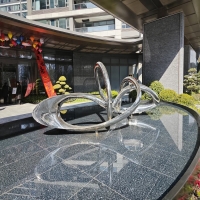Welcome to the website for landscape facilities products and knowledge.
How does the trash can’s design ensure it is easy to pair with waste-to-energy solutions?
The integration of trash can design with waste-to-energy (WTE) solutions is a critical step toward sustainable waste management. Modern trash cans are engineered with features that streamline the transition from collection to energy recovery, ensuring efficiency and environmental benefits.
1. Material Compatibility: Many contemporary trash cans are made from materials that are easily separable and non-contaminating, such as stainless steel or high-density polyethylene. This ensures smooth processing in WTE plants, where materials must burn cleanly or be sorted for recycling.
2. Smart Segregation: Advanced bins incorporate compartments for organic, recyclable, and non-recyclable waste. This pre-sorting reduces contamination and optimizes the quality of feedstock for WTE facilities, improving energy output.
3. Compact Design: Space-efficient trash cans with compaction mechanisms reduce waste volume, lowering transportation costs and emissions. Compacted waste burns more efficiently in WTE plants, maximizing energy production.
4. IoT Integration: Smart bins equipped with sensors monitor fill levels and waste composition, enabling data-driven collection routes. This minimizes unnecessary pickups and ensures timely delivery of waste to WTE facilities.
5. Eco-Friendly Coatings: Some bins feature heat-resistant or anti-odor coatings, which prevent degradation during storage and transport, preserving waste quality for optimal energy conversion.
By prioritizing these design elements, trash cans not only improve waste management but also amplify the effectiveness of waste-to-energy systems, contributing to a circular economy and reduced landfill dependence.
Related search:

Recommendation
Abstract art sculpture, stainless steel metal sculpture, large-scale water feature sculpture